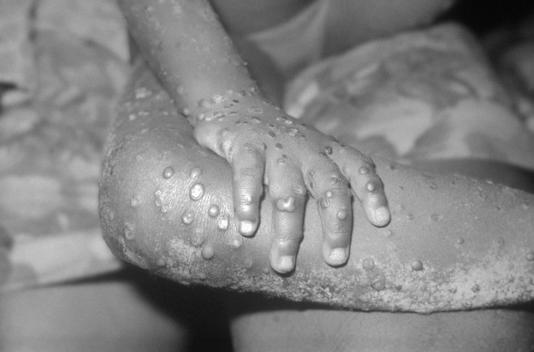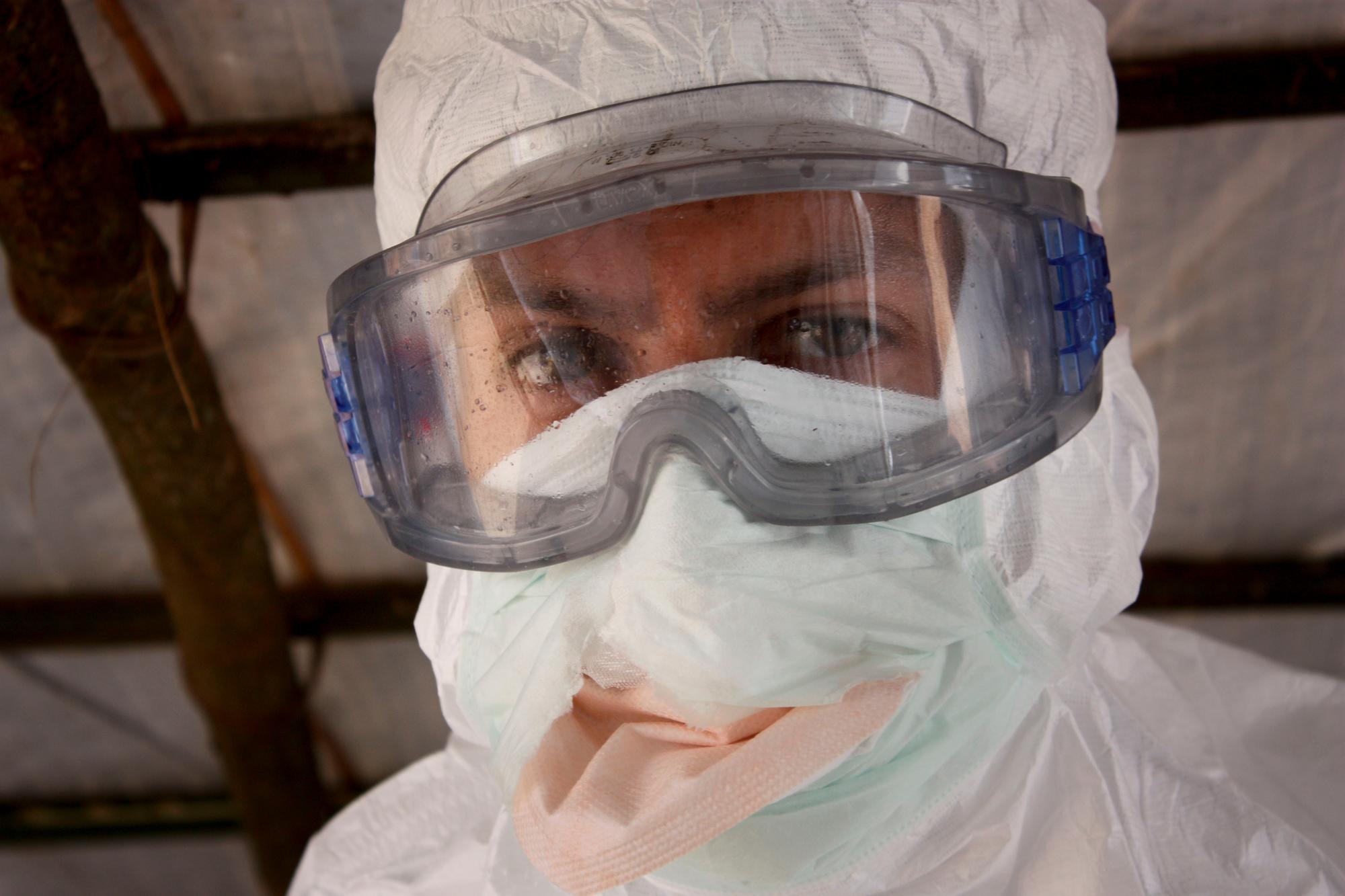World ignored monkeypox threats, including signs of sexual transmission
In an eerie echo of the coronavirus pandemic, more than a decade of warnings preceded the global outbreak of human monkeypox that has now spread to more than 31,700 cases — with about a third of those in the United States.
In 2010, researchers reported the rate of monkeypox cases in the Democratic Republic of Congo had increased twentyfold from the 1980s to the mid-2000s — growth that if unaddressed could cost the world a chance “to combat [the virus] while its geographic range is limited,” wrote epidemiologist Anne Rimoin from the University of California at Los Angeles and her co-authors in Proceedings of the National Academy of Sciences.
A second alarm came in late 2017, when Nigerian health authorities confirmed the country’s first case in almost 40 years: An 11-year-old boy brought to a hospital with lesions across his face and limbs ― a suspected case of chickenpox.
“His presentation was very unusual compared to chickenpox,” Dimie Ogoina, the physician who treated the boy, said by email. The child’s lesions, including some inside his nose, were larger than those found in chickenpox and doctors knew right away they were dealing with more than an isolated case. Two relatives said they’d experienced similar symptoms. Ogoina and his colleagues at Niger Delta University Teaching Hospital diagnosed monkeypox and alerted health authorities.
Their published report two years later concluded the virus was spreading from person to person, not just from animals to humans. And it appeared to be transmitting in a potentially dangerous new way ― through sexual contact. Most of the infected were young men, compared to previous monkeypox outbreaks in the region that had largely affected children.
The World Health Organization noted in its own report about the Nigerian outbreak in 2017: “The nature of person-to-person contact leading to transmission needs to be studied; some suspect sexual transmission may be one route.”
But the broader health community took little notice. Within eight months of Ogoina’s report, the novel coronavirus was overshadowing virtually all other global health concerns as it circled the globe.
The 2017 cases in Nigeria, believed to be the origin of the current outbreak, only garnered serious interest this spring, when monkeypox spread to dozens of other countries in the West, including the United States. By then, the world’s inattention had left two clades, or types of the virus, smoldering: The West African version that Ogoina encountered in Nigeria now reproducing globally, with less than 1 percent mortality, and the more severe Congo Basin version, with about 10 percent mortality. In the United States, with more than 10,760 confirmed cases, largely among gay and bisexual men, there have been no monkeypox-related deaths.
“We should have listened to people like Dimie Ogoina who was saying, ‘This is circulating, and it seems to be circulating to a large degree through sexual transmission,’ ” said Michael Worobey, head of the department of Ecology and Evolutionary Biology at the University of Arizona, who is now collaborating with Ogoina on monkeypox research. “We should have been stamping it out where it was circulating before it emerged.”
Worobey, who once fought forest fires in British Columbia, said stopping infectious diseases requires the same approach.
When lightning strikes, he said, “we get there and put the fire out when it’s a single tree burning, instead of a thousand acres. What we’ve done here is allowed it to become a thousand acres on every continent, instead of a single tree here and there.”
W. Ian Lipkin, a Columbia University epidemiologist, argued the monkeypox outbreak does not represent a public health failure, so much as an example of “the enormous challenge” of predicting which of a hundred global outbreaks poses the greatest threat.
“It’s a fire hose,” he said of the myriad viruses and pathogens. “How do you decide where to look?”
The WHO defended its record on monkeypox in a statement, saying it “has been working on monkeypox for decades ― even before the first human case was identified ― hand in hand with relevant Ministries of Health, research institutions and communities.” In Nigeria in 2017, WHO said, the agency supported that country’s CDC to mount a response. Given the growing risk of monkeypox, the statement said the agency has also advocated for development of additional therapies, vaccines and clinical trials.

‘A big warning signal’
The monkeypox virus, likely in the environment for hundreds if not thousands of years, was first identified and named for Danish laboratory monkeys in 1958. The first human case was not reported until 1970 in the Congo.
By 1980, a study in the Bulletin of the World Health Organization documented just 47 cases scattered through Central and West Africa over the previous decade. Although monkeypox had been found in laboratory and zoo animals, the paper’s authors wrote, “animal cases have not been detected in nature; the source of human monkeypox infection is still unknown.” They noted that in four of the 47 cases, “person-to-person spread” may have occurred.
That same year, global health leaders declared smallpox eradicated and the Congo stopped vaccinating its population against the disease, which comes from the same family of viruses as monkeypox but is more severe.
In 1987, researchers using a computer model, predicted that lack of smallpox vaccinations, which had protected people against similar viruses, would lead to more cases of monkeypox. But they concluded “it appears highly improbable” that monkeypox could reach a point of permanent spread among humans.
Rimoin’s findings suggest less certainty: She and her colleagues reported 760 confirmed cases in the Congo between 2005 and 2007, mostly among children born after smallpox vaccinations stopped in 1980.
Until now, the virus had made just one inroad into the United States — a 2003 outbreak afflicted 71 confirmed and suspected patients in six states, the majority in Wisconsin. Those cases spread to people from pet prairie dogs housed close to infected small mammals that had been imported from Ghana.
In 2003, however, it was unclear whether the virus was transmitted only from animals. While all of the infected people had interacted with animals, two also reported coming in contact with lesions or eye fluids from another patient. In contrast to the current outbreak, the virus spread for a little more than a month in 2003 before dying out.
Viral opportunities
DNA viruses, such as monkeypox, have much larger genetic blueprints than RNA viruses like SARS-CoV-2, and usually evolve more slowly. Yet the mutations in monkeypox have occurred far more rapidly than expected ― about one a month as opposed to one a year, according to Trevor Bedford, an evolutionary biologist at Fred Hutchinson Cancer Center
Viruses are opportunistic, needing only to find the right environment to thrive.
“With HIV, it’s virtually certainly the case that these viruses were jumping from chimpanzees and maybe gorillas into humans, probably for thousand of years,” Worobey said. “But it wasn’t until the late 1800s and the early 1900s that you started to have steamships on the Congo River, railways, roads, cities. And in cities, you have things like prostitution that really help the transmission of a sexually transmitted virus.”
“You take the same virus that couldn’t make a living in humans for thousand of years and now it can,” he added.
Several factors in recent decades appear to have provided monkeypox with opportunities to exploit.
The first was likely the successful eradication of smallpox, one of only two diseases that humans have wiped from the face of the Earth (the other is the animal disease rinderpest).
In addition, recurrent civil war in the Congo, clearing of forests for logging and agriculture, and the butchering of animals for meat increased human contact with animals that transmit the virus. But these trends, and their effect on monkeypox transmission, failed to generate a significant response from health authorities.
“It’s much easier to stay out of trouble than it is to get out of trouble, and boy, did we not heed these warnings,” said Rimoin. “What happened in Nigeria should have been a big warning signal.”
Instead, she said, “globally everybody was hitting the snooze button on a pathogen that clearly had potential to take off.”
Researchers suspect the current outbreak began in Nigeria because of a pattern of mutations in virus samples taken from patients in 2017 that has persisted and expanded to the present day. These mutations were unlike those found in animal versions of the virus. They showed the mark of having encountered a human protein that fights viruses as part of the immune response.
While some viruses jump from animals to people without ever causing a sustained outbreak, Bedford said any human-to-human transmission is concerning. “That creates evolutionary pressure for the virus to get better at transmitting between humans,” he said.
Monkeypox’s success will depend not only on human behavior, but where mutations take the virus. Most mutations alter monkeypox’s genetic signature but not its ability to function. That allows health officials to track the virus and identify clusters of infected people, such as those in Nigeria since 2017 and from other countries this spring.
In a worst-case scenario, a mutation could make the virus more deadly or contagious. In the best case, accumulating mutations at 10 times the normal rate could lead to changes that threaten the virus’s survival.
“But don’t hold your breath for that to stop this outbreak,” Worobey said. “It’s not going to be a process that happens anytime soon.”
Scientists’ worst fear is that monkeypox may establish a permanent foothold in the United States and other countries, joining viruses such as HIV and influenza. Finding a reliable animal reservoir in the United States or elsewhere increases that likelihood.
“I think that it’s certainly possible,” Rimoin said.
Back in 2010, she and her colleagues warned that American ground squirrels are highly susceptible to the virus. “If monkeypox were to become established in a wildlife reservoir outside Africa, the public health setback would be difficult to reverse,” they wrote.
-WP-


